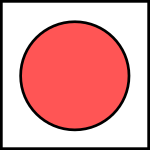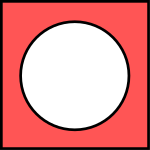
Back የውጭ ስብስብ Amharic مجموعة مكملة (نظرية المجموعات) Arabic Дапаўненне мностваў Byelorussian Разлика (теория на множествата) Bulgarian Complementari Catalan Doplněk množiny Czech Йышсен кăларнăлăхĕ CV Cyflenwad (setiau) Welsh Komplement (Mengenlehre) German Συμπλήρωμα (θεωρία συνόλων) Greek
In set theory, the complement of a set A, often denoted by (or A′),[1] is the set of elements not in A.[2]
When all elements in the universe, i.e. all elements under consideration, are considered to be members of a given set U, the absolute complement of A is the set of elements in U that are not in A.
The relative complement of A with respect to a set B, also termed the set difference of B and A, written is the set of elements in B that are not in A.
- ^ "Complement and Set Difference". web.mnstate.edu. Retrieved 2020-09-04.
- ^ "Complement (set) Definition (Illustrated Mathematics Dictionary)". www.mathsisfun.com. Retrieved 2020-09-04.



